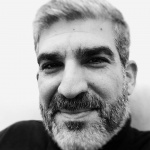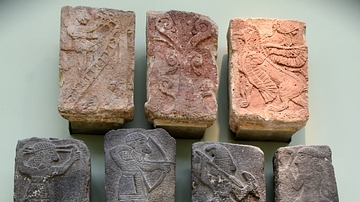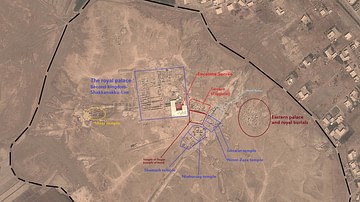Illustration
Tell Halaf is situated on the headwaters of the river Habur in modern-day north-eastern Syria. It was excavated between 1911-1921 by a German expedition under the direction of Baron Max von Oppenheim. Large areas of the early Iron Age city (circa 1200-900 BCE) were revealed. Ruled by an Aramaean family, the city known as Guzana (Old Testement Gozan), reached its peak of prosperity around the middle of the 10th century BCE under King Kapara. The base of the south wall of Kapara's palace was lined with a series of 187 reliefs carved in black basalt alternating with red-ochre tinted stone. Although Tell Halaf was occupied in later periods, it ceased to be an important city after the fall of the Kapara Dynasty. Some of these reliefs are carved with cuneiform inscriptions which read "Palace of Kapara, son of Hadianu". 10th century BCE. (The British Museum, London)
About the Author
Cite This Work
APA Style
Amin, O. S. M. (2016, April 10). Basalt Relief Sculptures from Tell Halaf. World History Encyclopedia. Retrieved from https://www.worldhistory.org/image/4871/basalt-relief-sculptures-from-tell-halaf/
Chicago Style
Amin, Osama Shukir Muhammed. "Basalt Relief Sculptures from Tell Halaf." World History Encyclopedia. Last modified April 10, 2016. https://www.worldhistory.org/image/4871/basalt-relief-sculptures-from-tell-halaf/.
MLA Style
Amin, Osama Shukir Muhammed. "Basalt Relief Sculptures from Tell Halaf." World History Encyclopedia. World History Encyclopedia, 10 Apr 2016, https://www.worldhistory.org/image/4871/basalt-relief-sculptures-from-tell-halaf/. Web. 04 Jul 2025.








